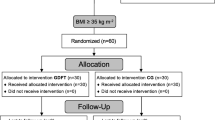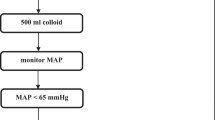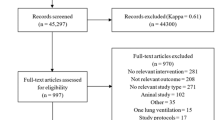Background: Wound infection risk is inversely related to subcutaneous tissue oxygenation, which is reduced in obese patients and may be reduced even more during laparoscopic procedures. Methods: We evaluated subcutaneous tissue oxygenation (PsqO2) in 20 patients with a body mass index (BMI) ≥40 kg/m2 (obese group) and 15 patients with BMI <30 kg/m2 (non-obese group) undergoing laparoscopic surgery with standardized anaesthesia technique and fluid administration. Arterial oxygen tension was maintained near 150 mmHg. PsqO2 was measured from a surrogate wound on the upper arm. Results: A mean FIO2 of 51% (13%) was required in obese patients to reach an arterial oxygen tension of 150 mmHg; however, a mean FIO2 of only 40% (7%) was required to reach the same oxygen tension in non-obese patients (P=0.007). PsqO2 was significantly less in obese patients: 41 (10) vs 57 (15) mmHg (P<0.001). Conclusion: Obese patients having laparoscopic surgery require a significantly greater FIO2 to reach an arterial oxygen tension of about 150 mmHg than non-obese patients; they also have significantly lower subcutaneous oxygen tensions. Both factors probably contribute to an increased infection risk in obese patients.
Similar content being viewed by others
Author information
Authors and Affiliations
Rights and permissions
About this article
Cite this article
Fleischmann, E., Kurz, A., Niedermayr, M. et al. Tissue Oxygenation in Obese and Non-obese Patients During Laparoscopy. OBES SURG 15, 813–819 (2005). https://doi.org/10.1381/0960892054222867
Published:
Issue Date:
DOI: https://doi.org/10.1381/0960892054222867




